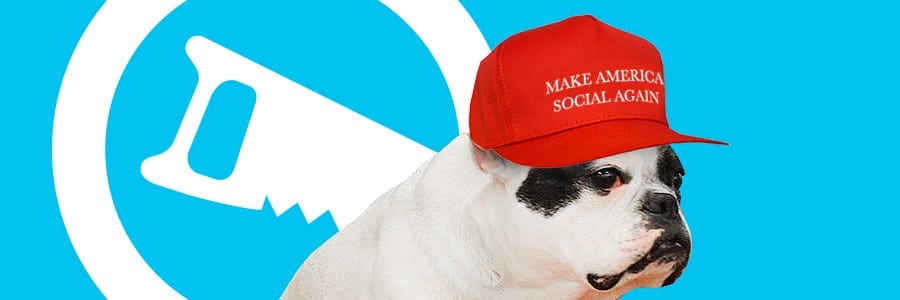
Smexit? A Brave New Social Order
While the citizens of Great Britain were contemplating a departure from the European Union last week, more than 300 social media devotees convened in Brooklyn at the Corporate Social Media Summit to challenge, if not leave behind, the conventional wisdom of years past. Though the outcome of this gathering was hardly of the historical significance of the Brexit vote, it did yield a new vision for marketers seeking to get the most out of their social media activities.
Pledge of Allegiance
Marketers as diverse as Coca-Cola, Hershey, Humana, H&R Block, the Kansas City Chiefs, Wells Fargo and Wilson Sporting Goods are pledging to a customer-first approach to social media. This means dedicating sufficient resources (i.e., staff and tools) to respond to customer issues via social media in minutes rather than hours or days.
Social customer service specialists are now being integrated into the overall customer service team with a dotted line back to the marketing folks. As Kimarie Matthews of Wells Fargo put it, “Social media is no longer a marketing channel — it is a customer experience.”
IRS: Intentional Responding Service
With a renewed commitment to social customer service, brands are seeking to resolve issues in channel, aided by innovations from Facebook and Twitter. According to Joshua March of Conversocial, Facebook’s Messenger platform is “the first channel that really makes a dent in phone calls.”
Jeff Lesser provided an update on Twitter’s new customer service offering that includes the ability to DM (direct message), respond in private and then poll c-sat at the end of the exchange. This feature has huge potential, given that 80% of customer service issues are raised on Twitter and the volume of such tweets has increased 2.5 times since 2014.
Poll the Populace
Forward-thinking brands like Hershey’s and Wilson Sporting Goods are using social media as a laboratory for both new product development and real-time responding. Kevin Hack, Hershey’s social intelligence leader, explained how they deflected a groundswell of negativity around Reese’s tree-shaped peanut butter cups by responding to complaints with an “all trees are beautiful” message. Amy Weisenbach, Wilson’s SVP of Marketing, offered a similar endorsement of social as THE place to “listen, analyze and learn.”
Social (Media) Security
In a metaphorical call-to-arms, Jenny Wolfram of Brand Bastian sounded the alarm about the lurking dangers for socially active brands’ overall public image and reputation. As Wolfram noted, “The trend is for the public to hold brands accountable for negative and/or inappropriate comments,” citing a specific example of responses on a paid post that led to death threats. Brands need to be constantly monitoring and removing harmful comments because consumers consider these comments part of the paid ad, explained Wolfram.
A Vote of Confidence
Though metrics are always an issue at such confabs, the consensus at this year’s Corporate Social Media Summit was that social shares are by far the most critical and important measure of engagement. As James Royer, social chief for the NFL’s Kansas City Chiefs, put it, “Your content is just content — it’s only truly social once your customers share it.” Furthermore, the implied value of social shares (and your content, by extension) comes from the fact that “people share what they care about.”
This distinction between content and social media was a revelation for many attendees and was backed up with a case study of how the Chiefs garnered all sorts of pre-Brexit fans via social media when the team played in London.
The Price of Liberty
Although much of the conversation during the two-day conference focused on organic social media content and customer service, the importance of paid support surfaced like an unwelcomed tax collector. An exasperated Royer shared a chart of how organic reach for the Chiefs’ Facebook page had declined 40% in six months, making paid support a necessity rather than a casual consideration.
Other brands spoke to the necessity of boosted posts and the overall effectiveness of targeted spending on Facebook via Custom Audience and Lookalike buys. As conference emcee Drew Neisser put it, “We need to put the ‘media’ back into ‘social media.’”
Power to the Peeps
Several presenters spoke to the opportunity, if not the necessity, of activating employees and social influencers as a means of increasing the reach of social content. Sociabble’s Trina Chaimongkol explained how employee advocacy programs could be carefully constructed to deliver millions of meaningful social impressions.
Konstanze Alex-Brown described in depth how Dell has cultivated a handpicked group of influencers. Alex-Brown’s recipe for success with influencers included choosing them selectively, nurturing them as individuals, and providing a fair exchange of value, like exclusive access to executives and guaranteeing an “independence of opinion that never gets compromised.”
For more detailed interviews with many of the panelists, be sure to visit TheDrewBlog.